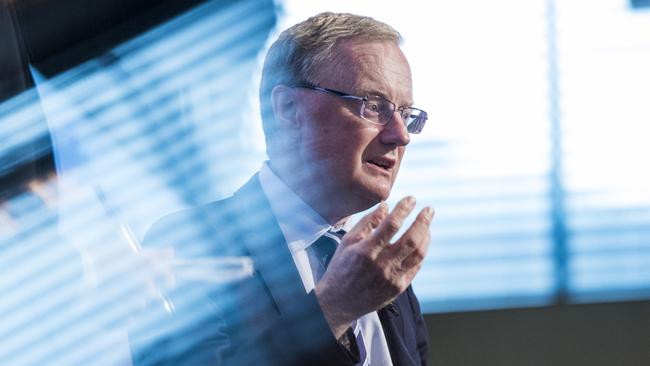
And for Jim Chalmers, who made the decision to remove an internationally regarded central bank governor, the Treasurer will hope a second wave of inflation doesn’t hit Australia. After September, he now owns the calls of the central bank that he has shaped.
The decision to not extend Lowe’s contract – the first RBA governor to be cut short in nearly three decades – was grounded in the need to reform the central bank for the future.
However, the reality is it gives the Treasurer and the Albanese government a much needed circuit breaker with voters when it comes to the punishing round of interest rate increases over the past year and possibly more to come.
If Chalmers had put his preferred candidate – the Department of Finance boss Jenny Wilkinson in the top seat – there would have been a serious business backlash and investor confusion about the direction of the RBA.

Instead, the highly-qualified Bullock, a near four-decade veteran of the central bank and named deputy governor last April, represents the best kind of continuity and certainty that capital markets crave for. It is the elegant solution to a badly handled situation that was entirely of Chalmers’ own making.
Now Chalmers has shaped the modern Reserve Bank like never before. He has appointed two external board members – Elana Rubin and Iain Ross. He has promoted Bullock and through convention has his own eyes and ears on the board through Treasury secretary Steven Kennedy.
There’s a major governance shake-up set to follow from the Chalmers-led review of the Reserve Bank.
There’s also another deputy to be appointed – a position also signed off by the Treasurer. This puts Chalmers’ fingerprints on at least five of the nine RBA board spots.
As the new leader of the RBA, Bullock will need to quickly show she can exert the bank’s independence, which has been questioned in recent months.
With a NSW country upbringing making her a straight shooter, Bullock hopefully won’t pull back from uncomfortable comments like what needs to be done to hit inflation targets or get a productivity boost.
Lowe, meanwhile, is expected to “finish the job” over the next two months with another two rate rises. There may even be only one more and then an extended pause. This gives Bullock clear air when she takes charge in late September, even setting the ground for a potential cutting cycle by mid to late next year.

However, this smooth path could all be up-ended if inflation – currently running at 5.8 per cent – continues entrenched or even worse, drifts higher if rents or wages get out of control. This will then require the cash rate to push past 5 per cent in Australia.
At the same time, if the economy falls into a recession, Bullock may resist cutting rates if inflation is not yet contained. This is happening across the Tasman where New Zealand is battling a cash rate of 5.5 per cent at the same time as negative growth.
This would be a nightmare scenario for Albanese and Chalmers who have built the “new RBA”.
Significantly, Chalmers let slip on Friday that Lowe was part of the short list of preferred candidates, but the Treasurer still went with Lowe’s deputy as the better option to lead the central bank.
Lowe kept the pressure on Chalmers all the way to the finishing line, refusing to rule himself out of the running even in the heat of speculation around his future.
There is still considerable uncertainty about what kind of RBA governor to expect under Bullock. However it is safe to say that as a senior member of Lowe’s team and an executive involved in decision making through the Covid-19 pandemic Bullock will continue with Lowe’s dovish instincts, perhaps even more (erring on the side of lower rates).
Several RBA watchers noted Bullock’s formal economics training in 1989 was at the left-leaning London School of Economics. While her world view has no doubt evolved since then, it means her focus in theory will skew to full employment over inflation.
Raw politics is never pretty and in Australia is often more clumsy than methodical.
This will bizarrely play out when Chalmers and Lowe are scheduled to travel to India for a long scheduled meeting of G20 Finance ministers early next week.
Here, Lowe is set to front his global counterparts and cameras days after being knifed by the man likely to be standing next to him.
johnstone@theaustralian.com.au




Incoming Reserve Bank governor Michele Bullock is the compromise for the replacement of Philip Lowe that allows the central bank’s normal succession processes to take place. Although it has all played out at a much faster pace than what it should have.